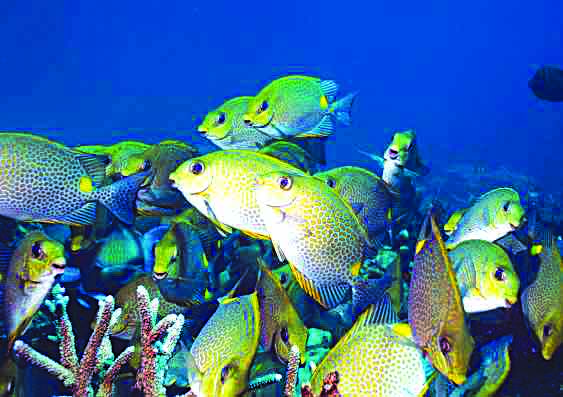
SAN JOSE, Antique – A school of rabbit fish, commonly known as “danggit” (Siganus fuscescens), has attacked the biggest seaweed farm in Western Visayas located on the island-municipality of Caluya, Antique.
“The seaweed farm in Caluya is the biggest so far in Region 6,” said Alleth Gayatin, senior aquaculturist of the Office of the Provincial Agriculture (OPA).
Wary of the effect of the rabbit fish on the cultured seaweeds, town mayor Rigil Kent Lim and municipal agriculturist Gilor Tandog came to the Capitol on Wednesday to ask for assistance.
According to Gayatin, there are about 3,000 hectares of coastal area in Caluya that had been devoted to seaweed farming.
“Currently, there are around 1,319 farmers with 242,896 monolines that have been affected by the rabbit fish,” she added.
The monoline is the polyethylene rope about 20 meters in length where the seaweeds seedlings are being attached using a straw lace so that it could grow.
Tandog, on his part, said the seaweed culture is the primary source of income of the people, especially on the islets of Panagatan 1, 2, and 3 in Caluya.
“Per monoline, a seaweed farmer can harvest at least seven kilograms of seaweeds,” he said.
Tandog added that with the 242,896 monolines producing a total of 1,700,272 kilograms of seaweeds that are being sold for a price of P85 per kilogram then the 1,319 affected farmers could be earning P144.52 million supposedly this October during their harvest time.
“The 1,319 affected farmers are just in Panagatan and so there could be more seaweed farmers affected in other island barangays of Caluya,” Tandog said.
He added that together with their mayor, they are asking the provincial government to provide the affected farmers with assistance in the form of planting materials so farmers could still replant.
“Farmers in Caluya although they know that danggit could also be sold in the market, but because they are still small the farmers, they are doubtful that they could earn as much money from it,” Tandog said.
He added that farmers in Caluya catch danggit through fishing nets so that it could not further destroy their seaweeds that have a market in Manila and Cebu.
He regarded the increase of danggit as a natural occurrence as these feed on seaweeds. (With a report from PNA/PN)



